Hooks
- Transum
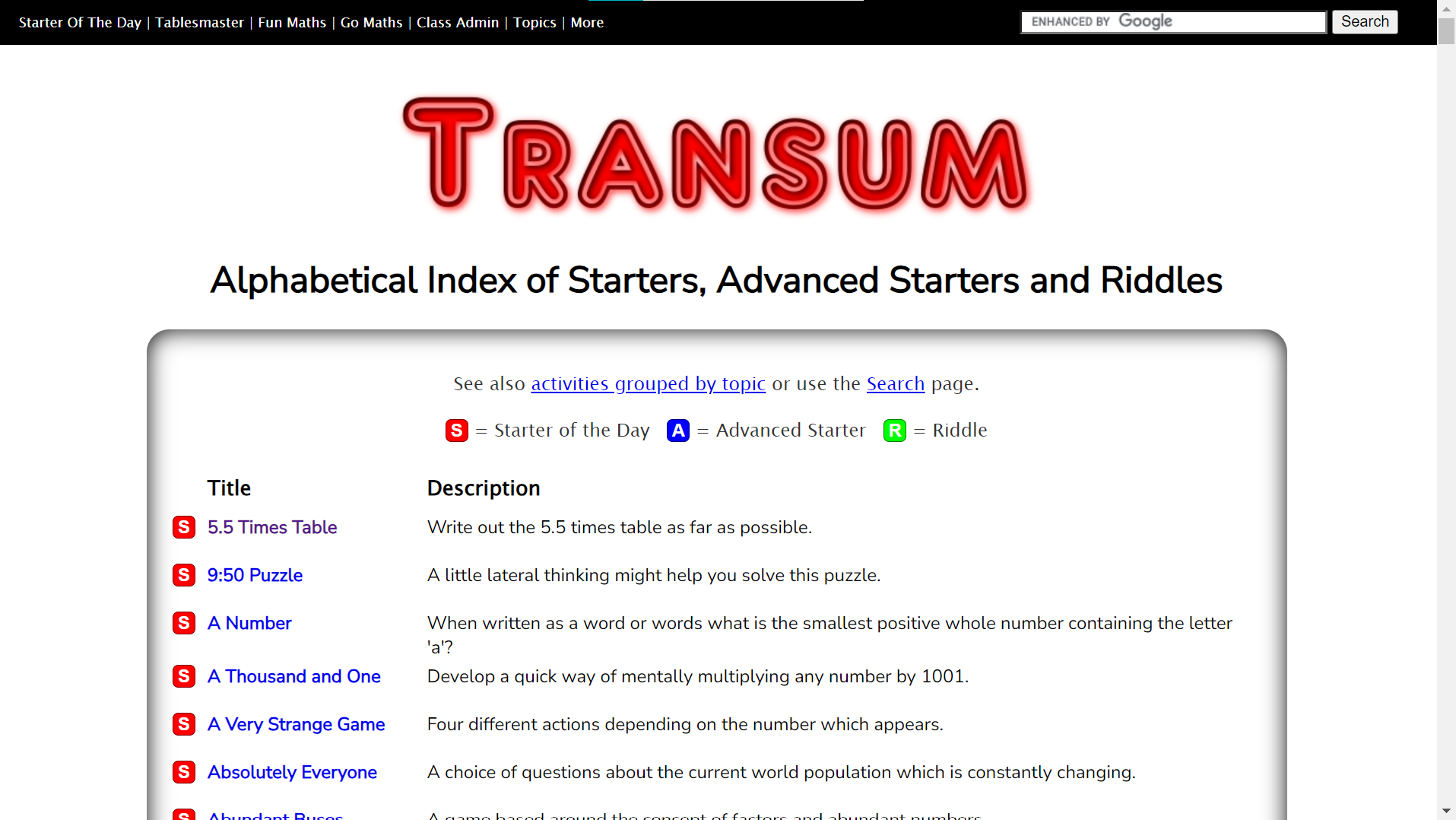 - This website is useful for starting lessons or, as breaks in between a lesson
- This website is useful for starting lessons or, as breaks in between a lesson
- My colleague Cindy highly recommends Countdown and Ancient Mysteries for lower ability classes
- Which One Doesn't Belong?
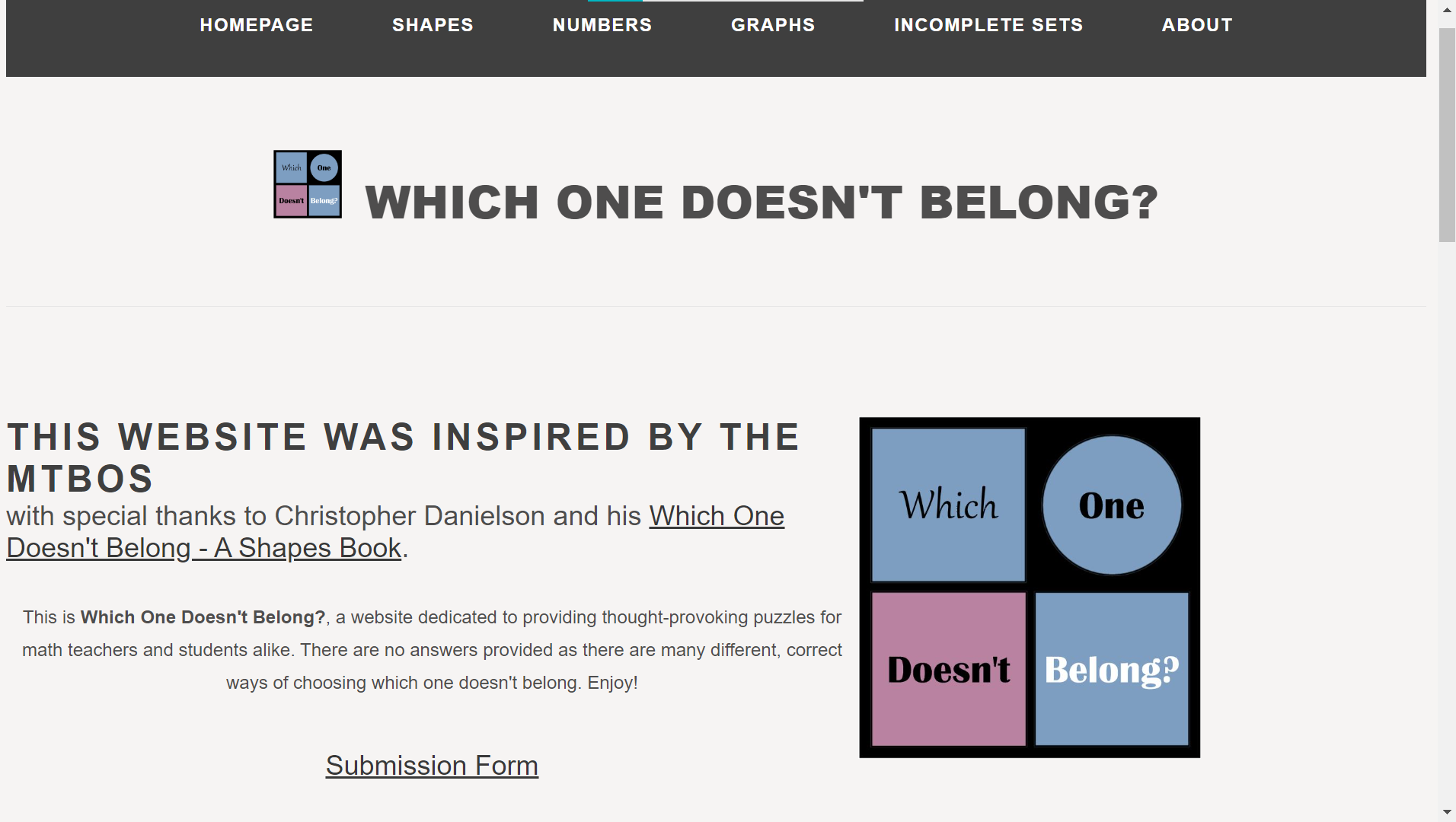
- Each prompt features four objects (such as shapes or numbers)
- Any of the four objects could be said to not belong, providing room for discussion
- Encourages students to present mathematical arguments and demonstrate reasoning
Exercises
- Mathspace
 : needs no introduction, used in most classrooms, provides individual-targeted exercises digitally
: needs no introduction, used in most classrooms, provides individual-targeted exercises digitally
- I personally prefer Mathspace to Education Perfect, but to each their own
- Freefall Mathematics
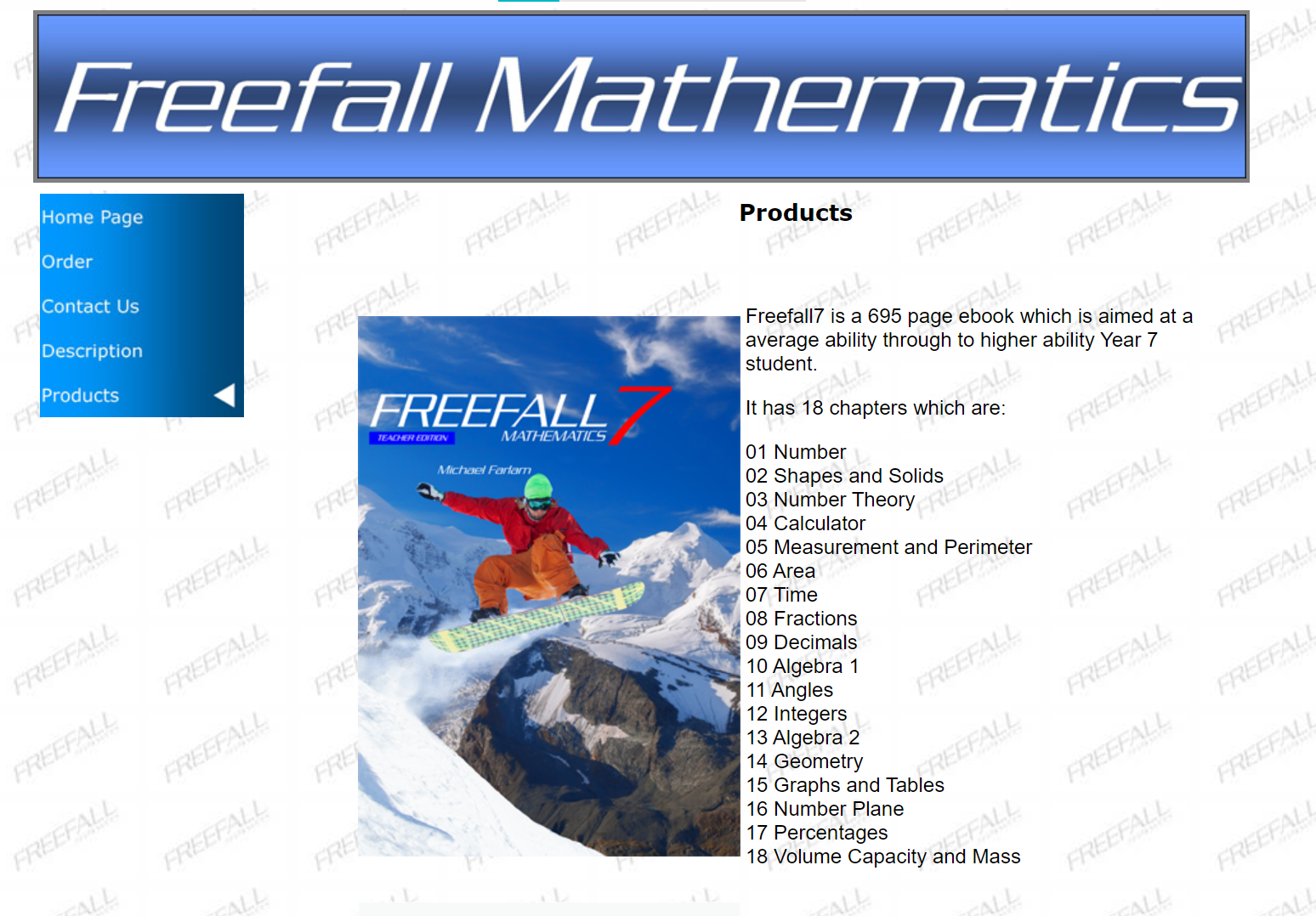 : worksheets and ebooks - many schools have a subscription
: worksheets and ebooks - many schools have a subscription
- Numeracy Ninjas
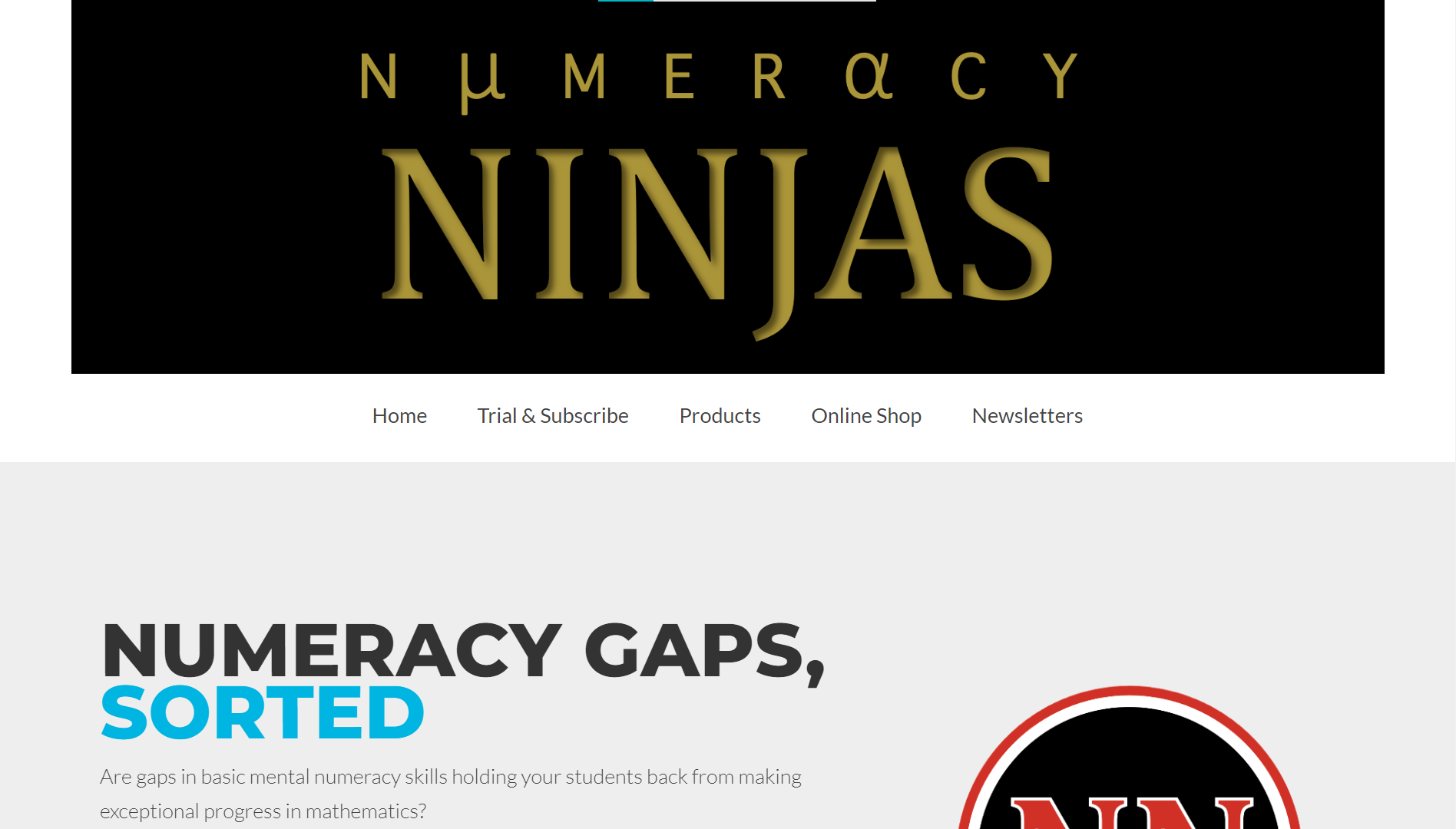 : Practice questions for numeracy
: Practice questions for numeracy
- Builds on primary and Year 7 skills such as times tables, time telling, place value, etc.
- Recommended by my colleague Madushan
- MathsOnline
 : exercise sets and video tutorials
: exercise sets and video tutorials
- Simultaneous Equations
- Topic: algebra, graphing
- My colleague Dennis describes the material as "the latest refinement of the lesson material I use for teaching simultaneous equations.
- "There is a PowerPoint which uses animations extensively, so it is best used with a remote clicker for slides shows.
- "There are some quick quiz worksheets and other resources."
- MATHSprint.com: Worksheets for Number, Algebra, Graphs, Shape & Space, Stats & Probability
- Dr Austin Maths: Scaffolded exercises
- Covers Number, Algebra, Geometry, Statistics Probability
- Types of exercises: fill in the blanks, true/false, odd one out and practice strips
Lesson Plans
- Supporting Australia Maths Project
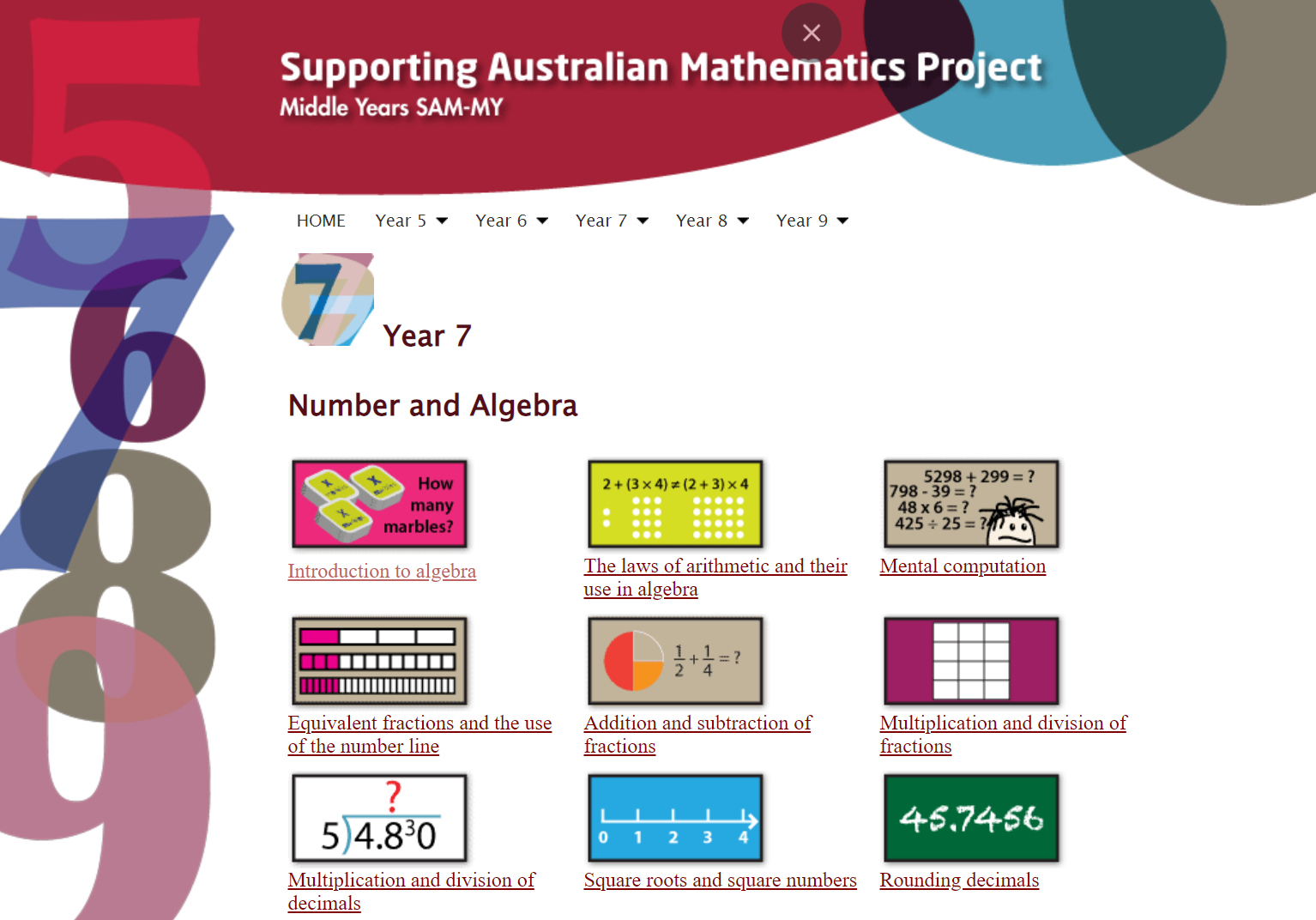 : Lesson Plans for Years 7-9
: Lesson Plans for Years 7-9
- NSW Lesson Plans
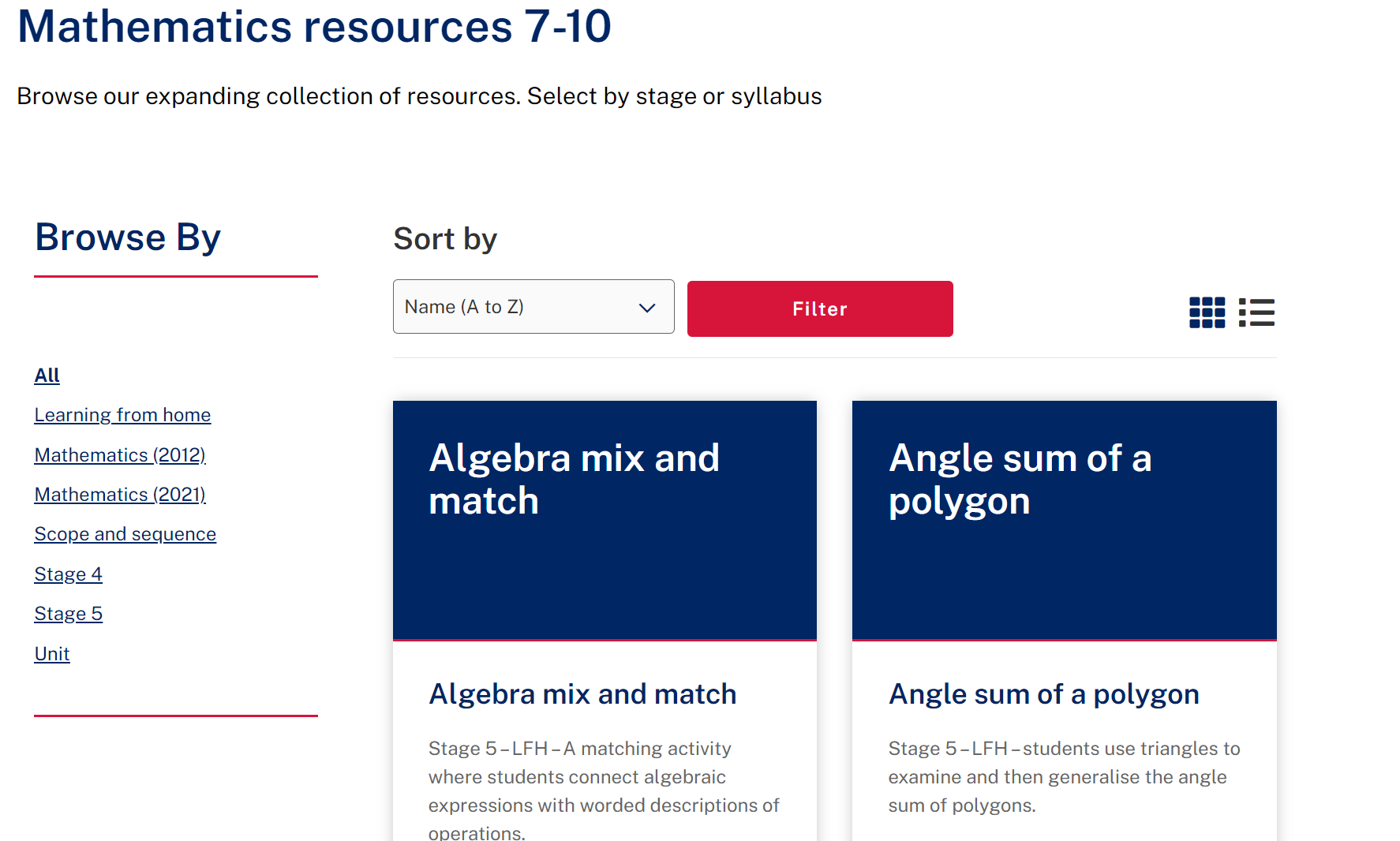 : Fun out-of-the box activities for Years 7-10
: Fun out-of-the box activities for Years 7-10
- Texas Instruments activities
 : Calculator based activities
: Calculator based activities
- Example: this activity has students solve simultaneous equations to decide when to take a taxi vs. rideshare.
- Note: These activities require a programmable calculator, which students may lack. Wolfram-Alpha can provide an alternative to a handheld calculator for several of the activities.
Games
- Combining Like Terms Uno
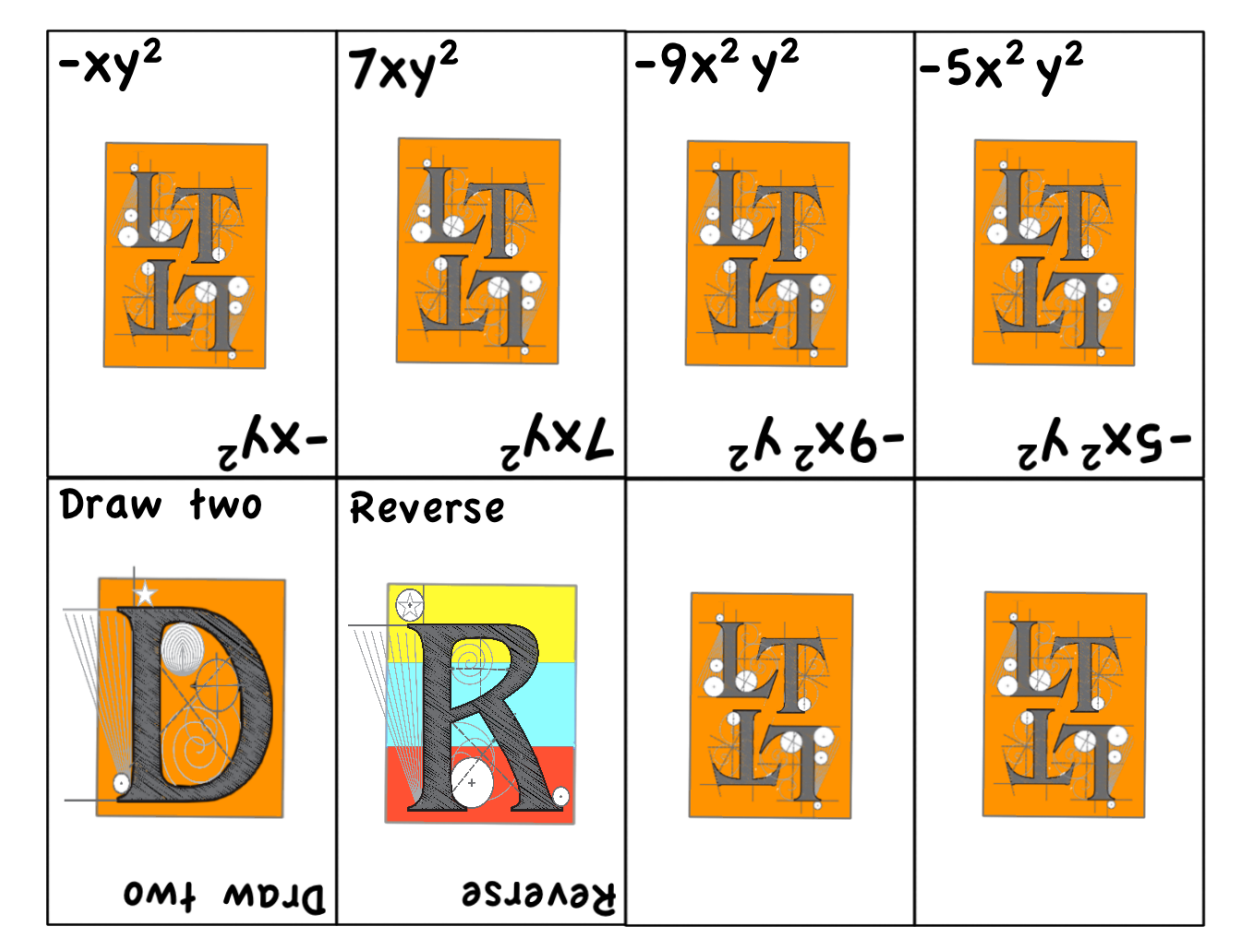
- Algebra card-game
- Blooket
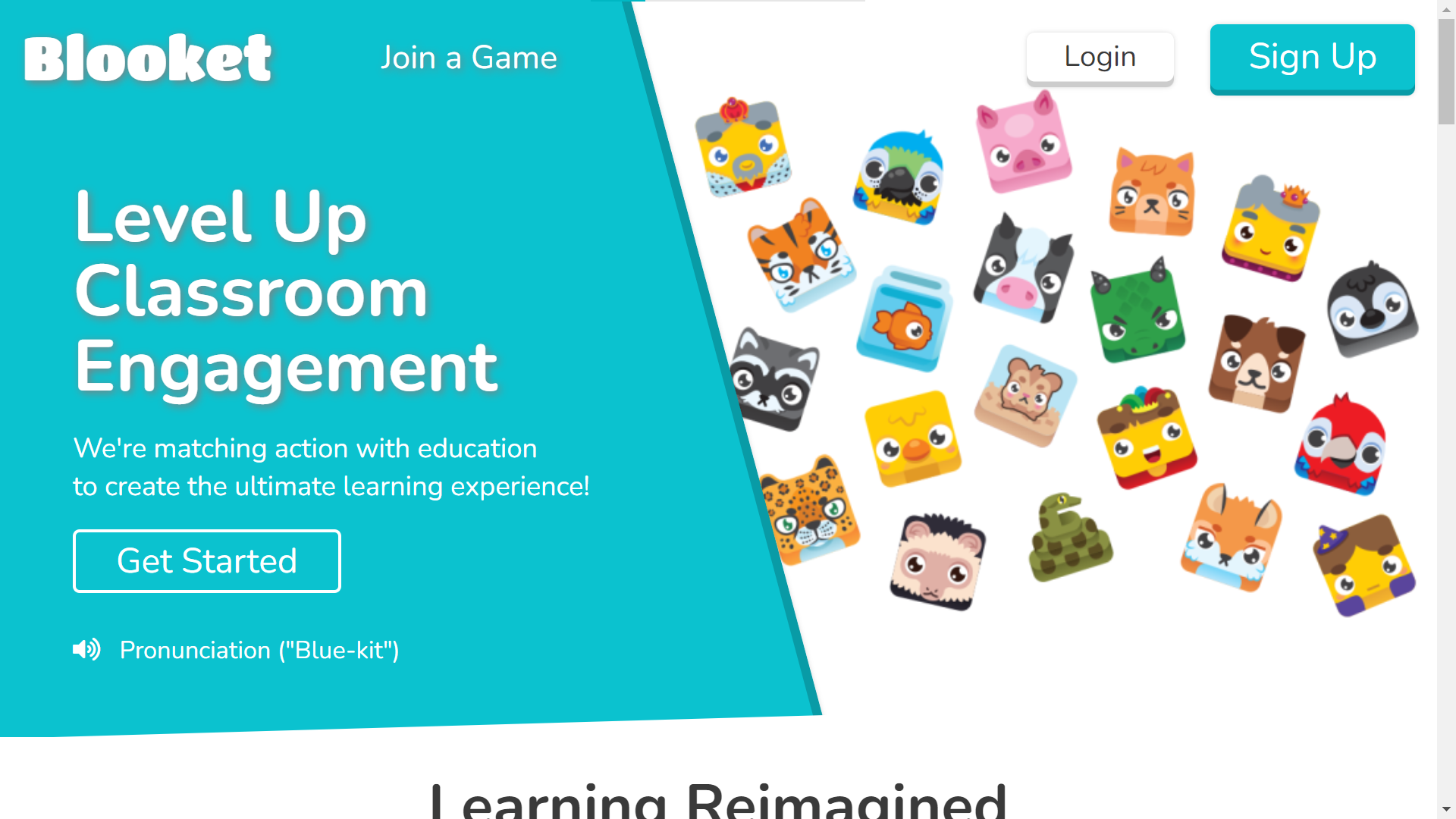 : Similar to Kahoot!, it gamifies the quiz process. Works well as a Friday afternoon activity
: Similar to Kahoot!, it gamifies the quiz process. Works well as a Friday afternoon activity
- My colleague Shaza recommends the crypto mode.
- Kahoot!
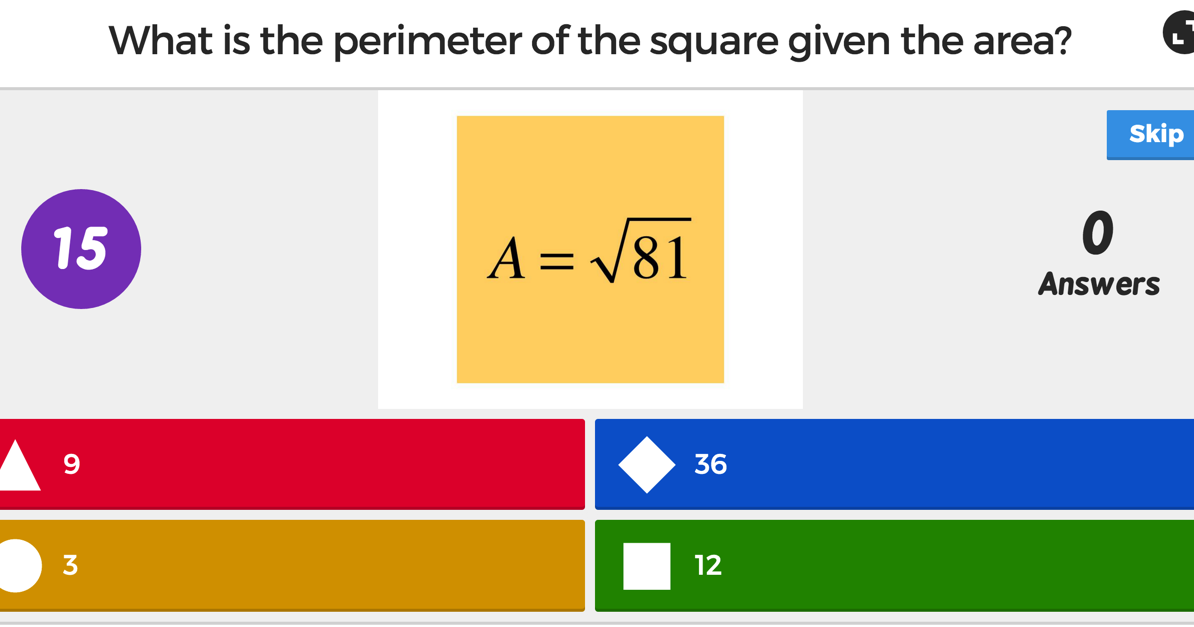 : in-class competitive topic quizzes
: in-class competitive topic quizzes
- This is a guide for teachers.
- Greedy Pig
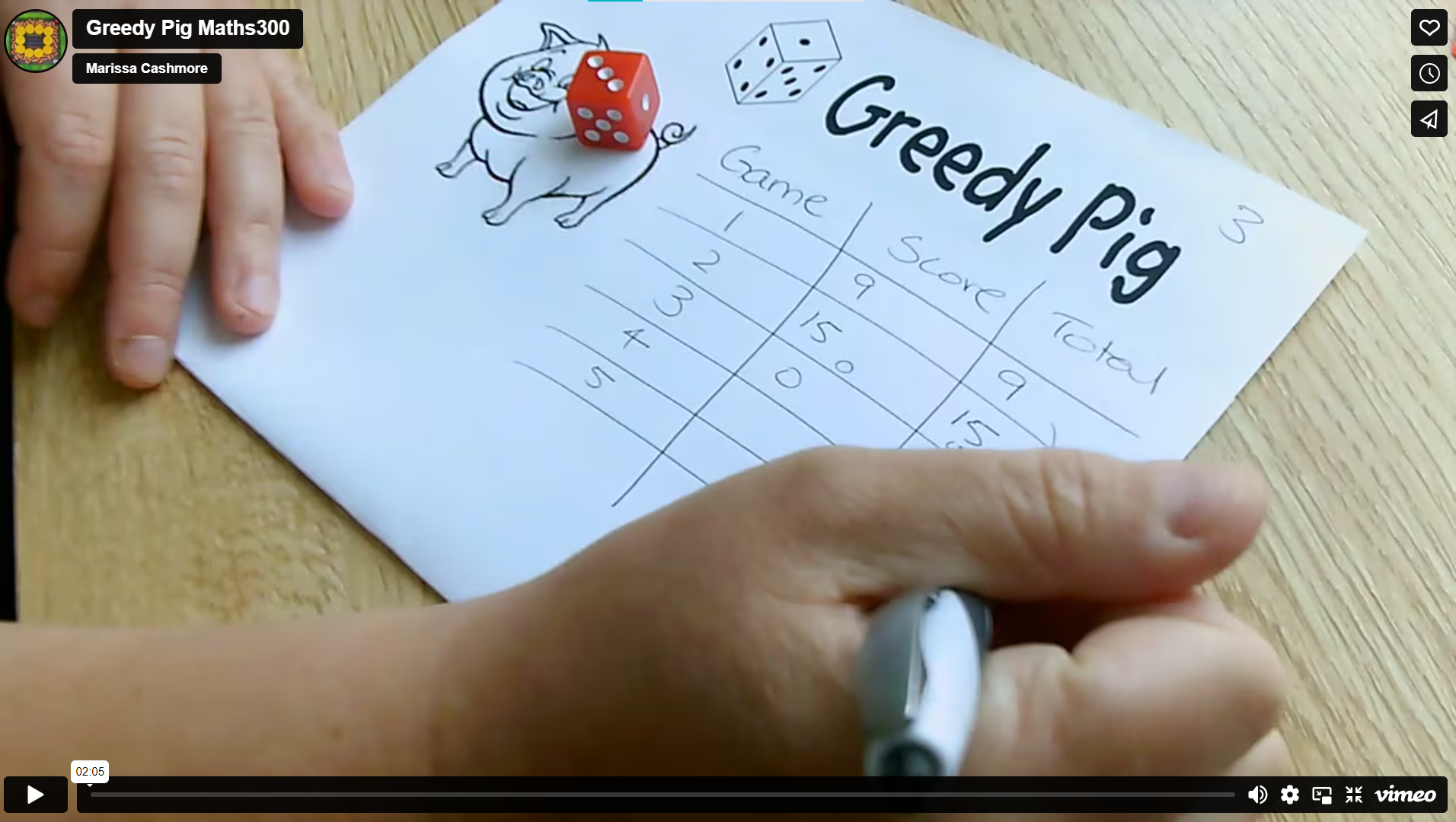 : game introducing probability and providing addition practice (lesson plan by NSW Department of Education)
: game introducing probability and providing addition practice (lesson plan by NSW Department of Education)
- AAMT Maths 300 provides Greedy Pig software, which Denise Halliday recommends.
- The YouTube channel Numberphile has a video called The Math of Being a Greedy Pig (length 33:05 minutes).
- Maths Bingo
- Topics included: rates and ratios, percentages, decimals, rounding, basic operations
Geometry
- Pythagoras Theorem: Intuition and Applications
- Liquid Pythagoras Theorem
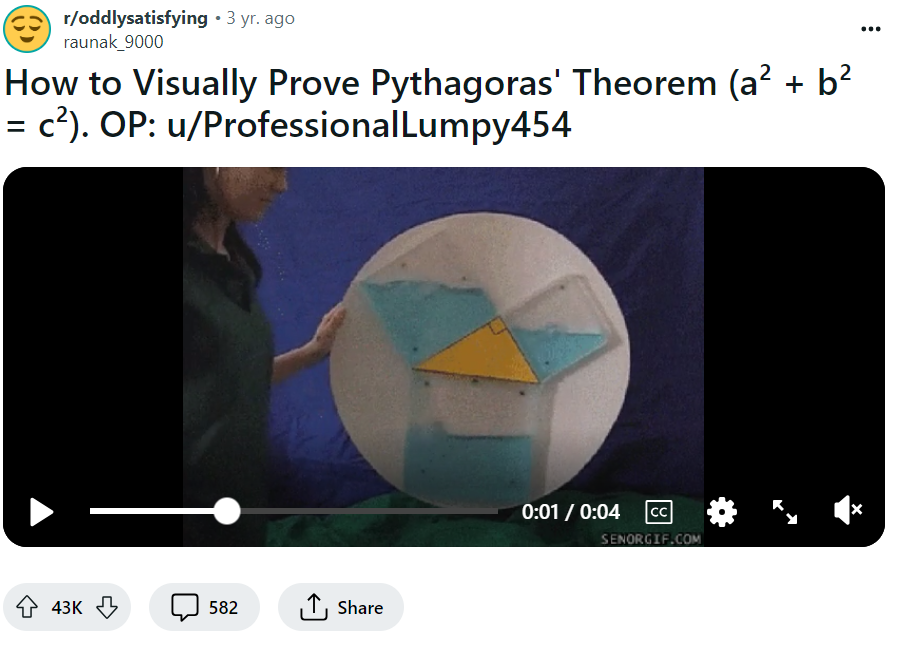 : Visual model of areas of right triangle sides
: Visual model of areas of right triangle sides
- Pythagorean Stack: Extension activity for Year 8
- This activity comes from Equation Freak Blogspot
- My colleague Paige notes: everyone had different answers to the final side value, including us teachers. It was great to see how using certain values at certain decimal points can have long-term effects on a final answer.
- Grok Learning
 : Programming with Python
: Programming with Python
- My colleague Alex recommends this resource with the following descriptors
- It introduces programming for year 7 students
- Can be easily integrated in the Measurement topic
- One option is python programming, the other option uses block-style click-and-drag programming.
- Note: this is a paid resource but can be shared by the whole school, including coding activities and some courses used by the DT department <!-- * Dance Dance Transversal: Game for Angle relationships
- Cindy made this activity to teach co-interior angles, corresponding angles, etc.
- Year 7-8
- Fun team activity, requires some open space
- Based on the popular game Dance Dance Revolution TODO: Need to add ppt link instead of pdf, and need to put songs in folder. make zip file -->
Manipulatives
- Four Card Permutation: interactive (GeoGebra)
- shows how permutations are limited by choices and thus intuition for the formula n!
- Fraction drawing: whiteboard for fractions, provides pie and rectangular shapes
- Start with the information icon to the right (i), the interface is confusing without explanation
- Place value columns: visual depiction of place value with blocks, mimicking a classical teaching prop for primary students
- can be used to support numeracy
- Polypad/Mathigon: visualisations and interactive representations in geometry, algebra, fractions, probability etc.
- My colleague Miriam has kindly provided this tutorial video on using this worksheet as an example.
Multiple Topics
- Gerry Dear Resources for Maths Teachers
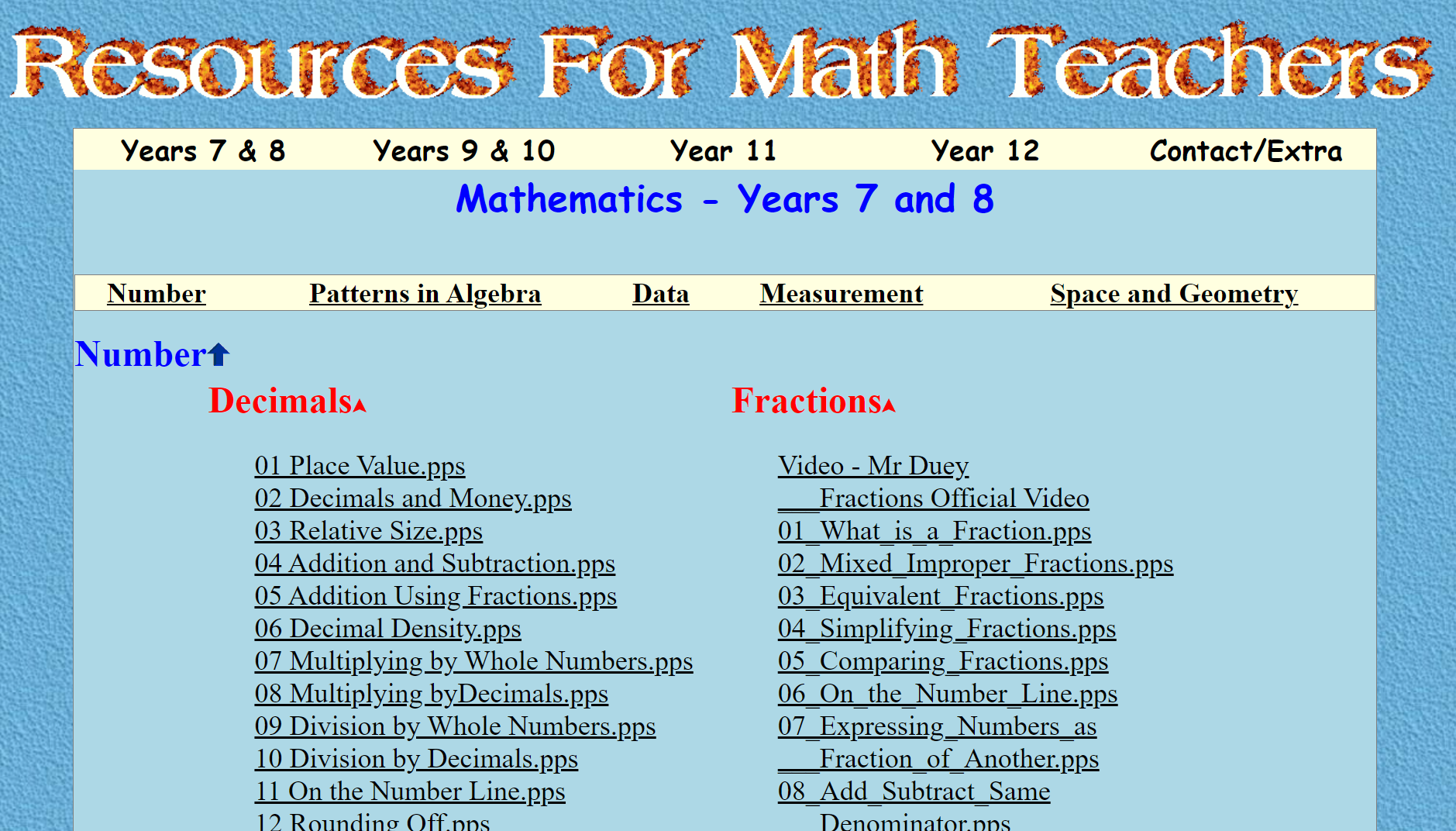
- My colleague Hui Min found this helpful when planning lessons and provided the following descriptions.
- Contains PowerPoints for some topics in Stage 4 and 5
- Good starting point and inspiration as to how to teach some topics
- Particularly good are the transitions included and the design for student engagement
- Recommended: order of operations, angles of elevation and depression, rates and prime and composites.
- Corbett Maths

- Video tutorials, worked examples and exercises
- Topics covered: geometry, algebra, stats (averages), decimals + lots more
- Warning: Unsorted, long list
- Kyle Webb Maths Tasks
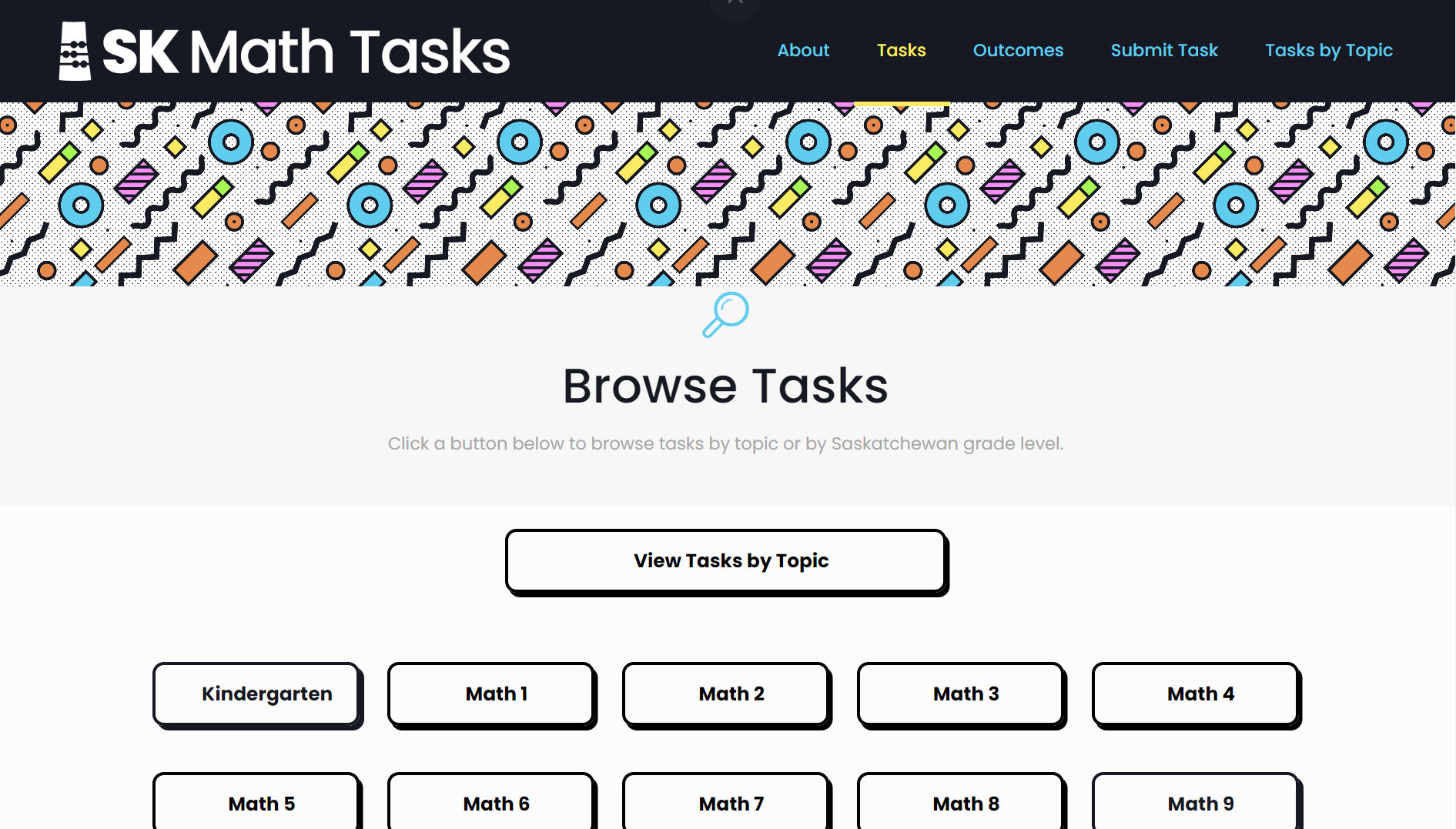 and BTC Curricular Math Task Sheet K-12
and BTC Curricular Math Task Sheet K-12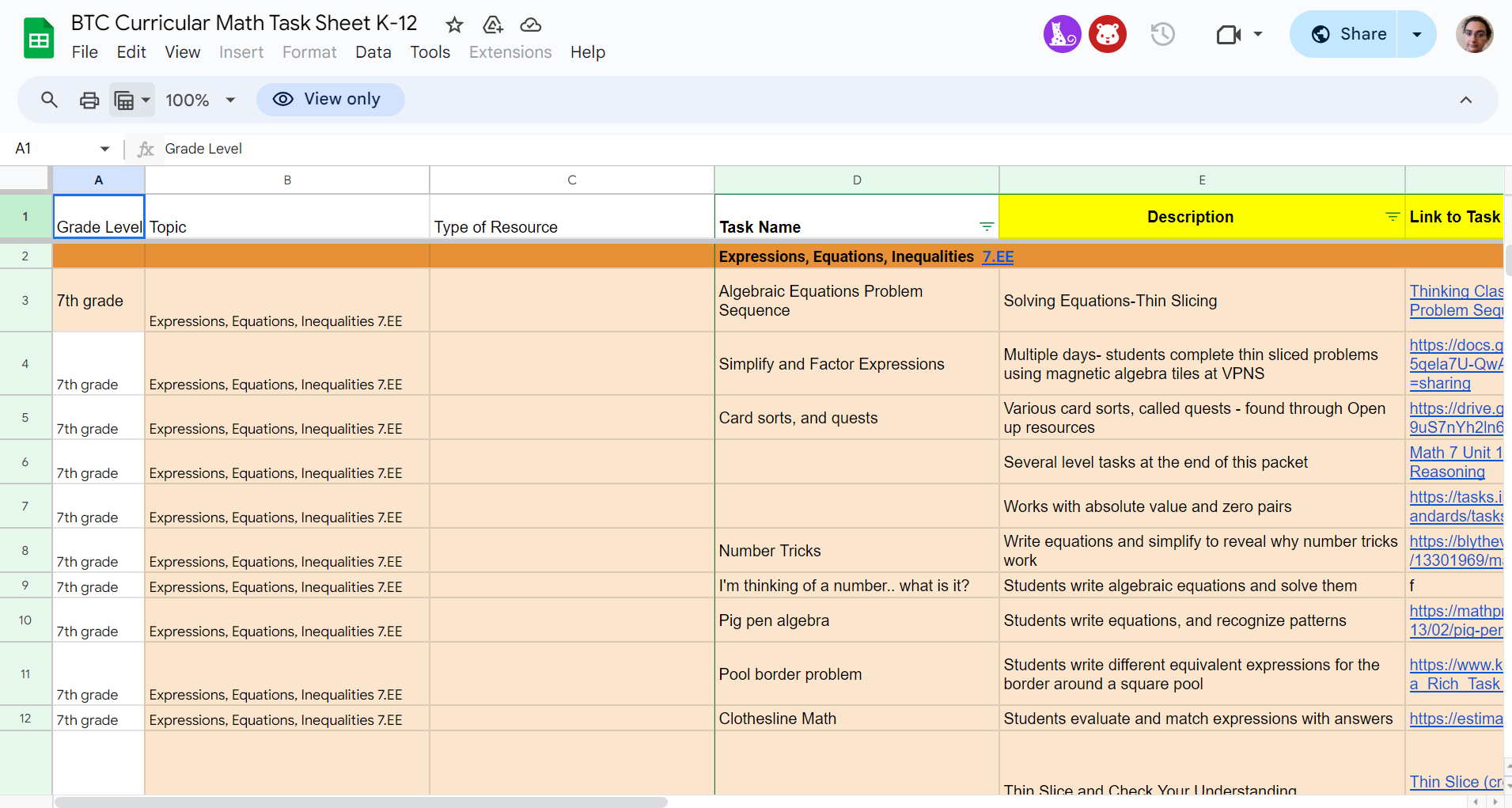
- My colleague Cindy sent this link of resources based on the pedagogy discussed in Peter Liljedahl's book, 'Building Thinking Classrooms in Mathematics'
- Activities to teach mathematics through a more critical thinking lens
- These are aligned with Canadian and U.S. standards, so require a bit more searching.
- Relatedly: Jojo Ayao provided this powerpoint using the Building Thinking Classrooms model.
Miscellaneous
- Comparative Tables for Variables
- Students fill out tables asking them to sketch how function output would change with smaller or bigger values.
- Prompts intuitive understanding of how change in variables changes functions
- Tables for Year 7 and Year 12 provided as examples
- Idea can be used for any mathematical concept where two variables are compared into a graphical or physical representation
- Encourages students to visualise concepts
- Paige found this activity sometimes better in competitions, and sometimes in discussions
-
Implicit Differentiation Worksheet
- Andrew Huang made this worksheet for his Extension 2 class, as a refresher for related rates/differential equations
-
- Microsoft Teams groups for different faculties, including Mathematics
- Has resources and text channels for different streams
Thanks to Cindy Tran, Madushan Bandara, Jojo Ayao, Hui Min Wang, Alex Oakes, Paige Nelson Smith, Miriam Lees, Andrew Huang, and Shaza El Hage for sharing activities and links!
If you'd also like to share a link, please do drop it in this Google Form!